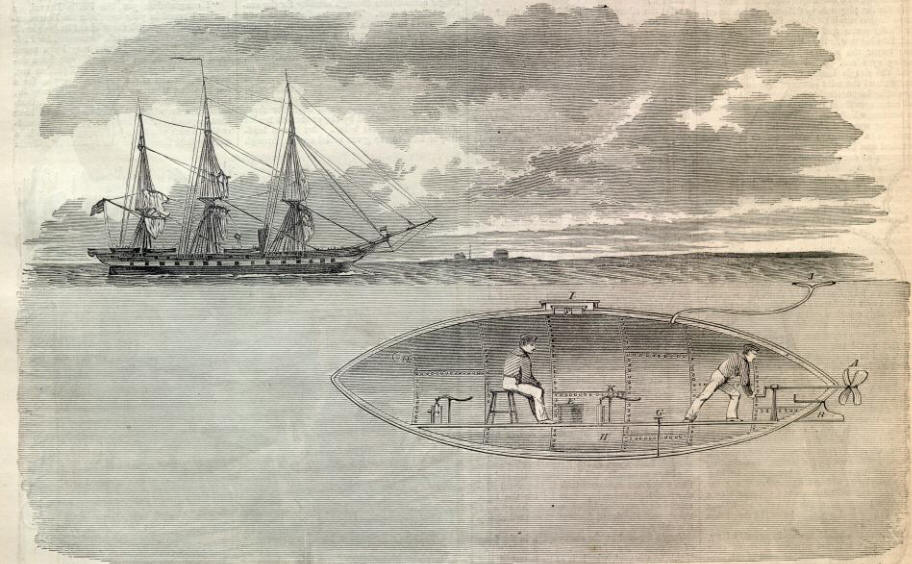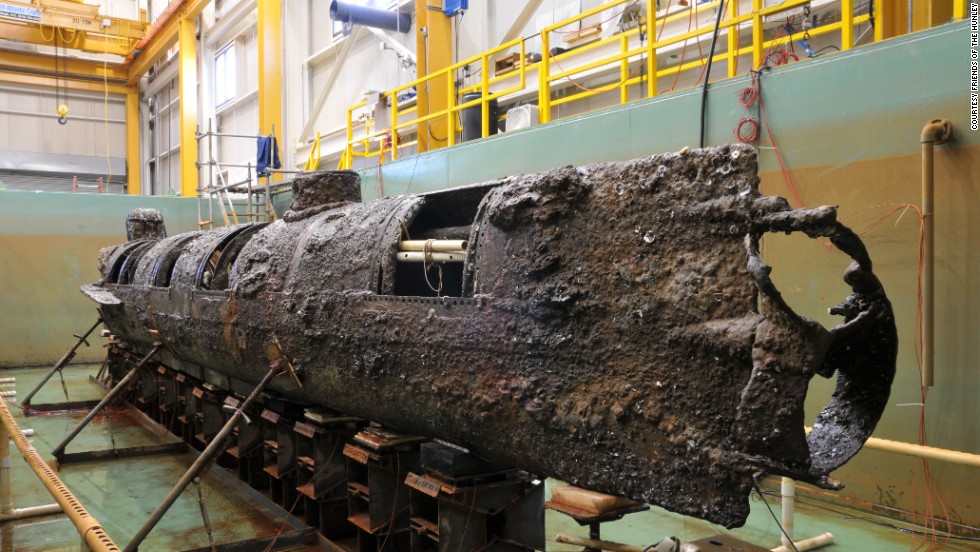
Prior to the attack, the sub, running near the surface with its turrets exposed, was spotted and fired upon, but it dove, successfully implanting its torpedo under the hull of the Housatonic and blew it out of the water. The target on February 17, 1964, was the Union ship Housatonic. The sub, only 40 feet in length, had two turrets, which when open on the surface were the source of oxygen and fresh air. A captain controlled the boat’s rudder and course by observing forward direction from a front window in the forward turret. Propulsion of the submarine was provided by the crew of seven turning hand powered cranks to drive a propeller. Weapons were called torpedoes, but unlike modern day self-propelled projectiles, were basically bombs mounted on the end of spars attached to the front on the fish boats and rammed against the hull of an enemy ship. Few of the early subs survived their initial missions. The boats had no undersea oxygen systems and could only stay submerged an hour or two as long as fresh air lasted in the watertight confides. The “fish boats” as they were called, were small, in comparison to undersea craft of WW I and WW II. The Hunley was not the first submarine built. The southern forces in Charleston, starving and woefully short of supplies because of the blockade, built a submarine, the HL Hunley, to challenge the blockade and attack the Union ships, hopefully opening the harbor for needed supplies.


Union forces retaliated by forming a blockade of ships in the harbor and bombarding Charleston with constant artillery fire.

Fort Sumter, a Union garrison in Charleston Harbor was fired upon by Confederate forces in 1861, announcing the opening salvo of the Civil War.


 0 kommentar(er)
0 kommentar(er)
